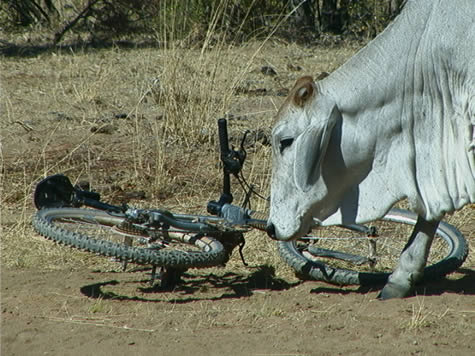Education for Sustainable Development – ESD.
Pollution comes in many shapes and forms. The most obvious that normally spring to mind are things like pollution of the sea by oil spills, pollution of the air by carbon dioxide from vehicle exhaust fumes, pollution of the land by over-use of fertilizers etc. But there are other forms of pollution – such as noise – that can be equally as disruptive to the environment.

We saw an example of this today with the animals we saw (see the general update that Josh wrote). Normally we’re quite a noisy group. Someone (usually Josh or Mike) is laughing or speaking loudly while biking along the road. So even though we’d like to see more wildlife, we really haven’t had too many opportunities so far. But today we stood completely still by the side of the road and let the environment come to us. First we had the emus that came investigating on their ‘emu patrol’. Then the cows come to with in a few feet of Todd while he was filming on a video camera and checked out his Cannondale bike (tasted pretty good by the look of it). Why was this so? Clearly the lack of noise we were making.
The ability to be quiet and listen to one’s environment is valuable in many ways other than getting close to animals. Developing a sustainable future for the planet very much depends on monitoring changes in the environment. On a large scale, measuring potential harmful effects of human actions on the environment is necessary in order to make appropriate policy changes at a national or international level. On a local scale, being aware of how the surrounding environment responds either positively, negatively or indifferently to a person’s actions is useful to know in order to reduce their Ecological Footprint.
Suggested learning activities: list 5 x human actions that affect the environment negatively either on a global or local scale. Suggest how each effect might be monitored and thereby modified, reduced or removed completely.
jason